Post Entry Cuts and Relocations is a drill I use to get the players more aware of how to play in a 2-man or 3-man game within the confines of the offense. The ability of the players to see and react to what the defense is doing makes these drills work better in a game. The players need to understand where and how the defense can play a post entry to truly take advantage of the areas where the offense can attack the defense.
I will start this drill with 2 offensive players to 0 defensive players. I will keep adjusting and adding players to finally get to a 3 vs 3 scenario. Each different variation helps to build the ability of the offense to react to the defense. I will start with the 2 on 0 drill and show you how I progress the drill with the additional players. I will also explain what the offensive is looking for from the defense and how to properly react to the defense with their given movements.
2 on 0 Post Entry and Score

The drill starts with a post entry from the wing to the post. The first thing I do is have the post make a move against air and score the ball. Offenses that have post players who can get a post entry and score makes the offense substantially harder to guard. A post player needs to be able to score the ball or get fouled if they get a post entry and the defense does not double them. So, I start the drill with the post catching and scoring.
2 on 0 Post Entry and Cut
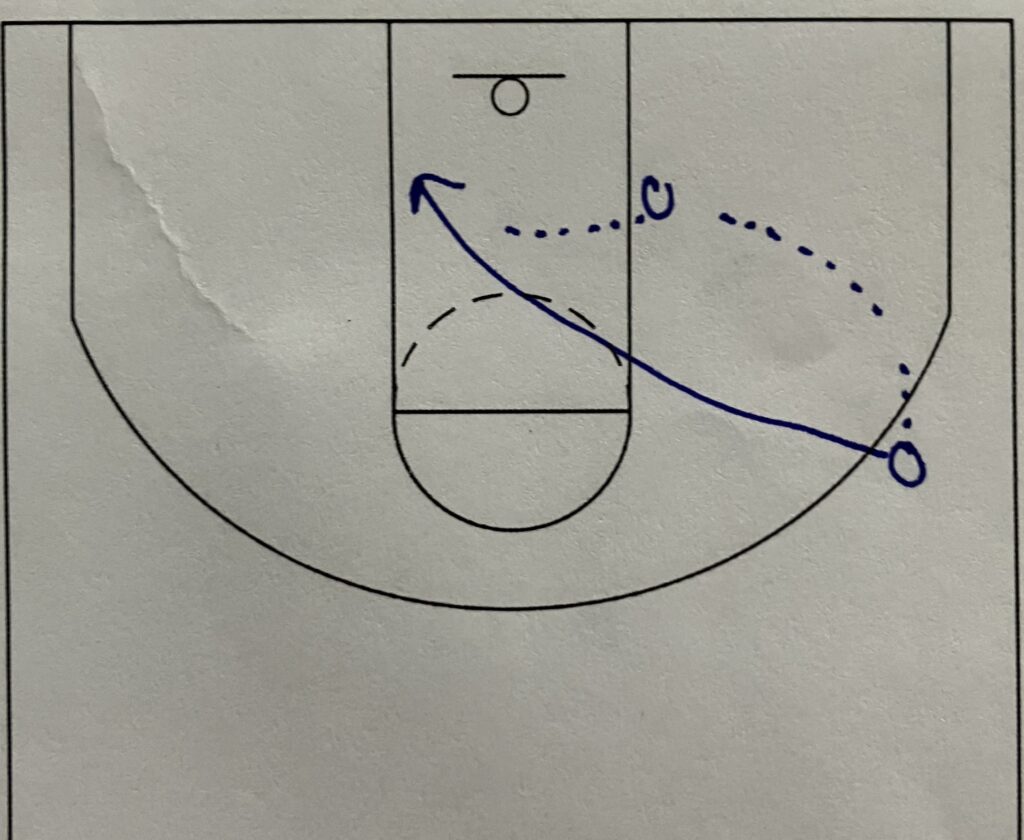
The next thing is to have the wing cut to the basket after the post entry. If the wing defender doubles down on the post entry, then the wing can cut to the basket and get a return pass for a layup. The wing enters the ball into the post. The post catches the ball. The wing then cuts to the basket. The post makes a pass to the cutting wing for a layup.
The key to making this pass is the post has to check the middle of the lane for a rotating defender coming in from the backside. The post should put their chin to their inside shoulder and peek into the middle of the lane. Even without playing against any defenders, the post should get into the habit of always peeking. The peek confirms the pass is open to the cutting wing. It also confirms a defender is not coming from the backside to double the post.
2 on 0 Post Entry and Relocation
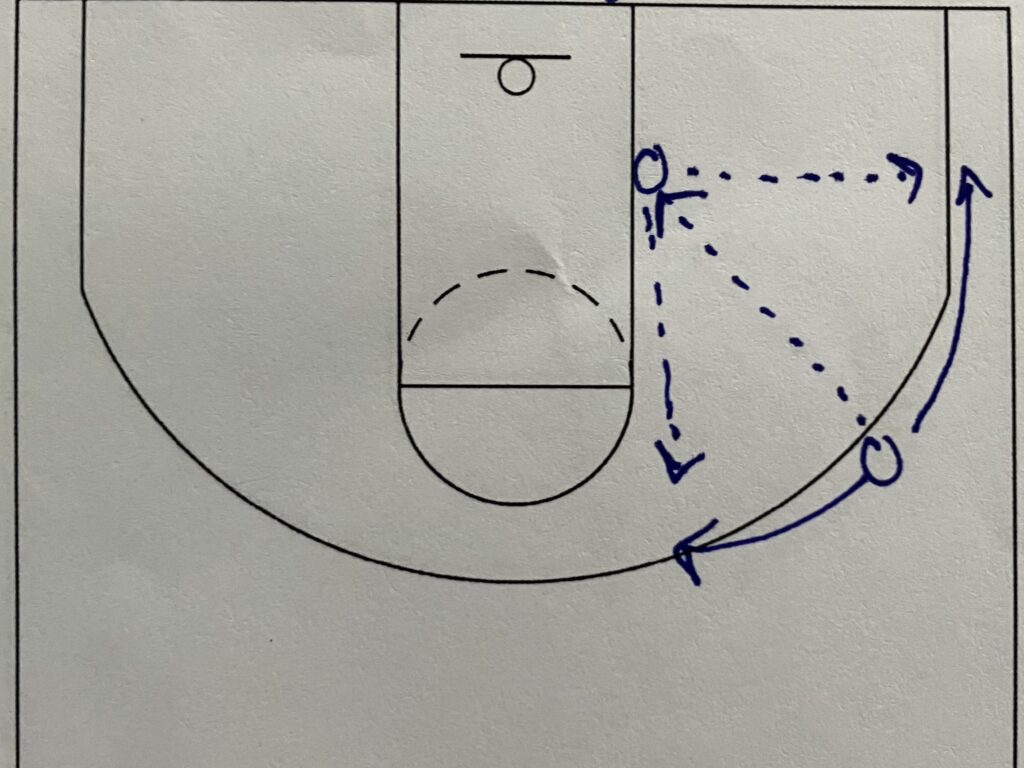
If a team does a good job of rotating from the backside, doubles off the wing or the wing is a good shooter, then the wing can relocate along the 3-point line instead of cutting.
The wing enters the ball into the post. The post catches and peeks. The wing moves up or down the 3-point line into the corner or close to the top of the key. The post kicks back out to the wing for a 3-point shot.
This type of post entry pass and kick-out works much better when the wing moves. The simple relocation moves the wing making the defense have to adjust. If the wing defender turns and doubles, then the wing needs to move to make it harder for the wing defender to closeout because they do not know exactly where the wing is at. If the wing does not move, then the wing defender has an easier time closing back out to the wing because they have not moved.
2 on 1 with Wing Defender

I add just a wing defender to start with leaving the post still playing on air. The wing passes into the post. The post catches the ball and still peeks to the middle.
But now the post is also reading the wing defender. The wing defender has two options.

Option 1: The wing defender stays out on the wing. If the wing defender does not double down on the post, then the post player is 1 on 1 with their defender. So, the post player needs to make a move and score or get fouled. At this moment that is a move on air.
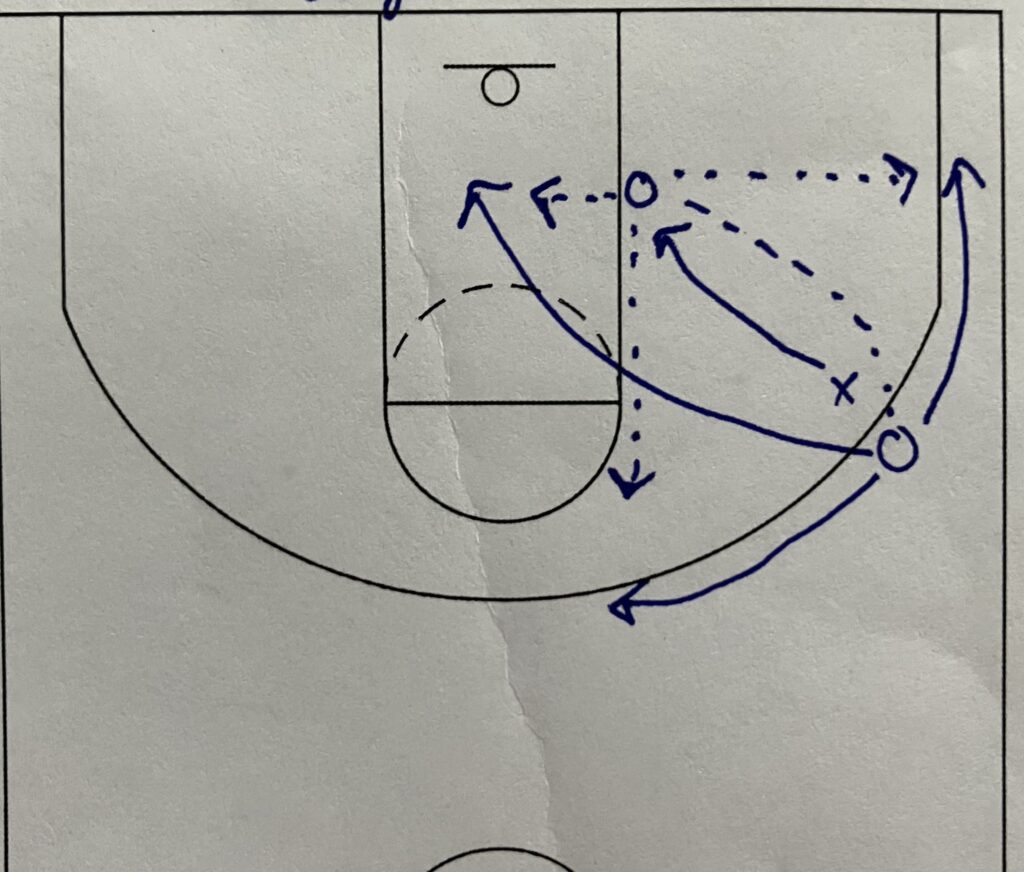
Option 2: The wing defender doubles down on the post. Depending on who the wing is or what your team philosophy is, this should be an immediate cut by the wing or relocation. The post sees the double coming and either passes to the cutter or passes back out for the kick out 3-point shot.
By adding in one defender only, the post is able to read and recognize their action easier. They do not have to worry about their defender at the moment but just what the wing defender is doing.
2 on 2
Once the post players get some time reading the wing defender and making the right play, I add the post defender. Nothing changes to the drill. The wing enters the ball into the post. The post catches and peeks. The post is still reading the wing defender. The same two options are still there as before.
If the wing defender stays out, then the post player is making a move and scoring. However, they are now playing live against a defender. It is now simulating a game scenario. If the wing defender doubles down, then it is either a pass to the cutting wing or a kick-out to the relocated wing.
I am slowly building the drill from what the offense needs to be doing piece by piece. I have simplified things down to a very small level and am now increasing it back out to a 5 on 5 situation. This is a first step in increasing it back out.
3 on 3
I keep this drill at a 3 on 3 level at maximum. I only work on the front side of the offense with this drill. I do not include the backside at all which is why I stop at 3 on 3. The additional defender requires the post to see more of the floor and defense. The reactions of the post player to the defense are still basically the same but they must process more information. This is the step where they are learning to process more visual inputs.
I also have a pre-determined offensive concept as to whether the wing will cut or relocate after the post entry. I have a set movement for my players to try and simplify the game as much as possible. Depending on what your team does, the additional 3rd offensive and defensive players will change what is going to happen with the drill.
3 on 3 No Help

The first option for the defense is to give no help to the post defender. The wing enters the ball into the post. The post catches and peeks. Neither one of the outside defenders doubles down on the post. This leaves the offensive post player 1 on 1 with their defender.
A post player must be able to score or get fouled in this scenario. If they cannot score or get fouled in this situation, then there is no reason to ever pass them the ball when they post. The post player reads no double team coming and makes a post move to score the ball.
3 on 3 Wing Defender Helping with Cut

This is reinforcing the concepts and movements that were drilled earlier. The wing enters the ball into the post. The post catches and peeks. The wing defender comes down to double the post. The wing cuts as their defender leaves. The post makes a pass to the wing cutter for a layup.
This is identical to what was happening with the 2 on 2. The difference now is the post has to read the double coming. Then the post has to read the 3rd defender. The 3rd defender stays with their man, so the correct pass is to the cutter.
3 on 3 Wing Defender Helping and 3rd Defender Dropping on Cut
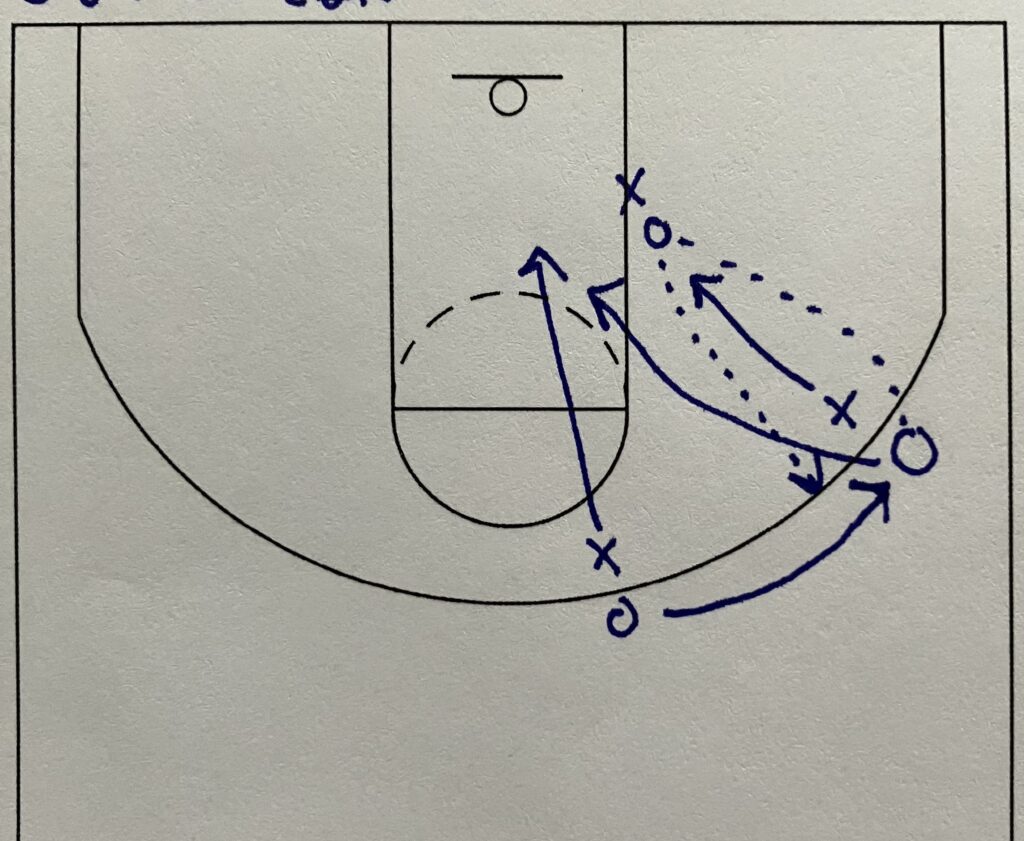
Now the drill starts to use the 3rd defender making the post player process more information and make the right decisions based on the additional movements.
The wing enters the ball into the post. The wing defender doubles down on the post. The wing cuts to the basket. The post should have been catching and peeking throughout the whole drill. The reason for the peeking is right now.
The peek should pick up the 3rd defender dropping to take the cut away. When the 3rd defender drops, the 3rd offensive player should rotate behind the wing cutter. The post should fake the pass to the cutter and kick it back out to the rotating offensive player coming over from the top of the key. This is a wide open 3-point shot.
With the 3rd defender dropping, this opens up the area behind the cutter. If an offensive player is able to cut into this area, they should be wide open for a kick out 3-pointer. It is a good idea to always have an offensive player fill in the spot left by a cutter. This area gets left open by defenses all the time because they are worrying about the cutter.
3 on 3 Top Defender Doubling

The wing passes into the post. The post catches and peeks. The top defender comes down and doubles the post.
Now we are adjusting the direction and angle of the double team. The post should pick up the double team as they are peeking to the middle of the lane.
As soon as the defender leaves to double, the offensive player at the top of the key should follow their defender straight down the middle of the lane. The post should deliver a good pass to the top man cutting for a layup.
3 on 3 Wing Defender Help with Relocation

Depending on your team’s philosophy, you may have the wing relocate on the double instead of cutting off the pass. If the offensive players are relocating, then the kick-outs and passing angles are going to be slightly different.
The key factor in deciding on whether to cut or relocate is 3-point shooting. Cutting is going to get more chances for layups while relocating is going to get more chances at 3-point shots. The ability of the players to shoot the 3-point shot should determine whether the players are cutting or relocating.
Now with relocating instead of cutting a couple of things get changed. The drill starts the same way. The wing passes to the post. The post catches and peeks. The wing defender doubles down on the post. The wing should relocate to the corner as their defender moves to the double. The post reads the double coming and kicks out for a corner 3.
3 on 3 Wing Defender Helps and Top Defender Rotates
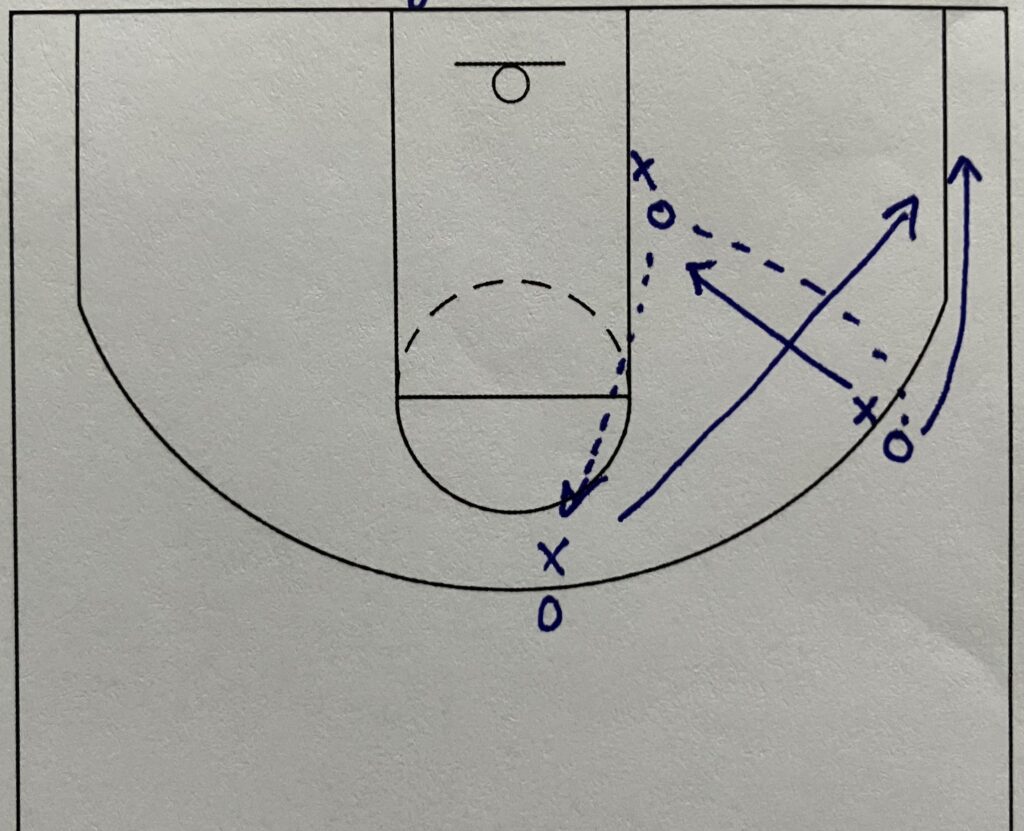
The wing passes into the post. The post catches and peeks. The wing and top defender are going to move together. The wing defender doubles down on the post. The wing relocates to the corner. The top defender is running to the corner to try and take the kick out pass from the corner.
The offense should do one of two things.
Option 1: The post reads the double down and rotate and kicks straight out to the top of the key for a wide open 3. This is the best option and detailed in the picture above.
Or Option 2: The post does not read the top defender rotating and still passes out to the corner. The wing sees the rotating defender coming down from the top and makes the extra pass back to the top of the key.
In either instance the ball should get to the offensive player at the top of the key for a wide open 3-point shot.
3 on 3 Top Defender Help
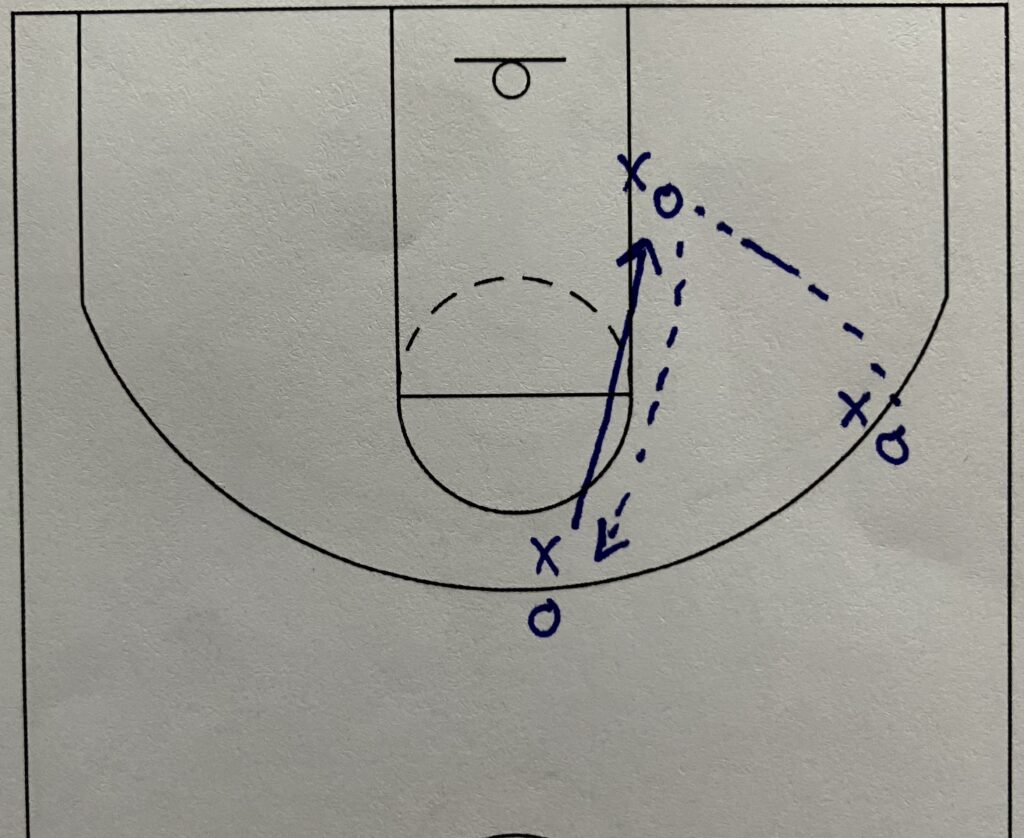
The last variation is having the top defender coming down to double the post. The initial setup is the same as always.
The wing passes to the post. The post catches and peeks. The top defender is now coming down to double. The peek should give the post player the ability to see the double coming. The post then passes out to the top of the key for a wide open 3.
3 on 3 Top Defender Help with Rotation
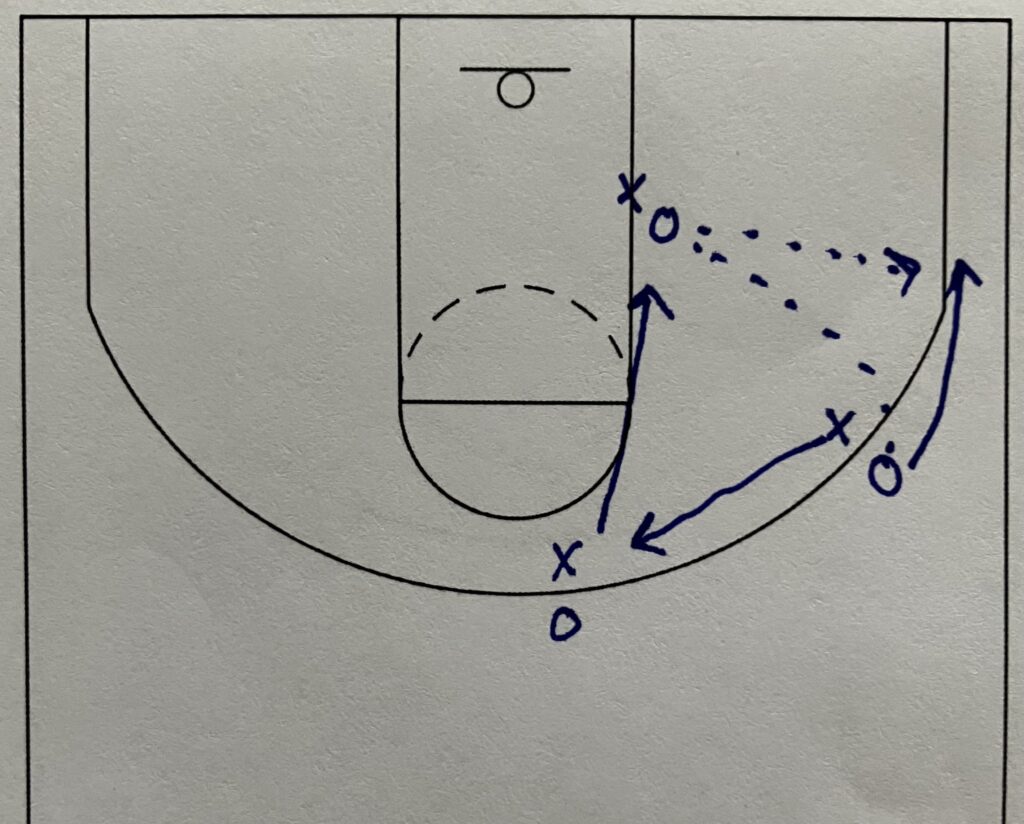
And the last variation to this drill is rotating the wing defender up when the top defender doubles.
The wing passes to the post. The post catches and peeks. The top defender doubles the post. The wing defender rotates to the top. Again, the best pass is straight out to the wing for a 3. However, if the post passes to the top of the key, then the offensive player on the top should make the extra pass to the wing for the open 3-point shot.
Conclusion
This is a great drill for any team that has or uses a post player. Sometimes we forgot about the smallest details being some of the hardest to learn. A post entry pass seems like a very small detail in the entire game of basketball. However, many players struggle with learning how to throw that pass. This drill helps players learn how to throw the entry pass.
It also helps teach post players where and how to look. An effective passing post player can shred a defense. It is not only about passing out of the post but making a good pass that leads to a score that helps to elevate an offense. A good passer must have good vision. Understanding where and how defenders are moving and what spots they are leaving open will help make a post player that much better of a passer.
And the last thing this drill does even though it is mainly an offensive drill is to get the defense learning and moving rotationally. There are games where I have our defense double the post. Knowing how to double from multiple spots helps our defense be unpredictable during those games. Being able to double from the pass, from the top and from the backside makes it difficult for an opposing post player.
This drill helps our defense learn how to double from the pass and from the top. These little details make our game time defense more effective because our players are not foreign to rotating and double from different areas of the floor.
All around, offensively and defensively, this drill will help your team. It helps to cover the bigger concepts of the game like seeing defensive rotations and passing away from them. But it also covers the smaller concepts like passing in and out of the post. Deflections that happen in games with passing around the post will start to go away. This drill is easy to set up and allows a team to get a lot of reps in a very short period of time.
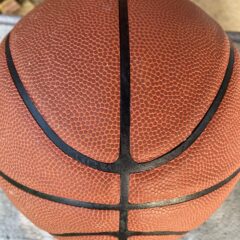
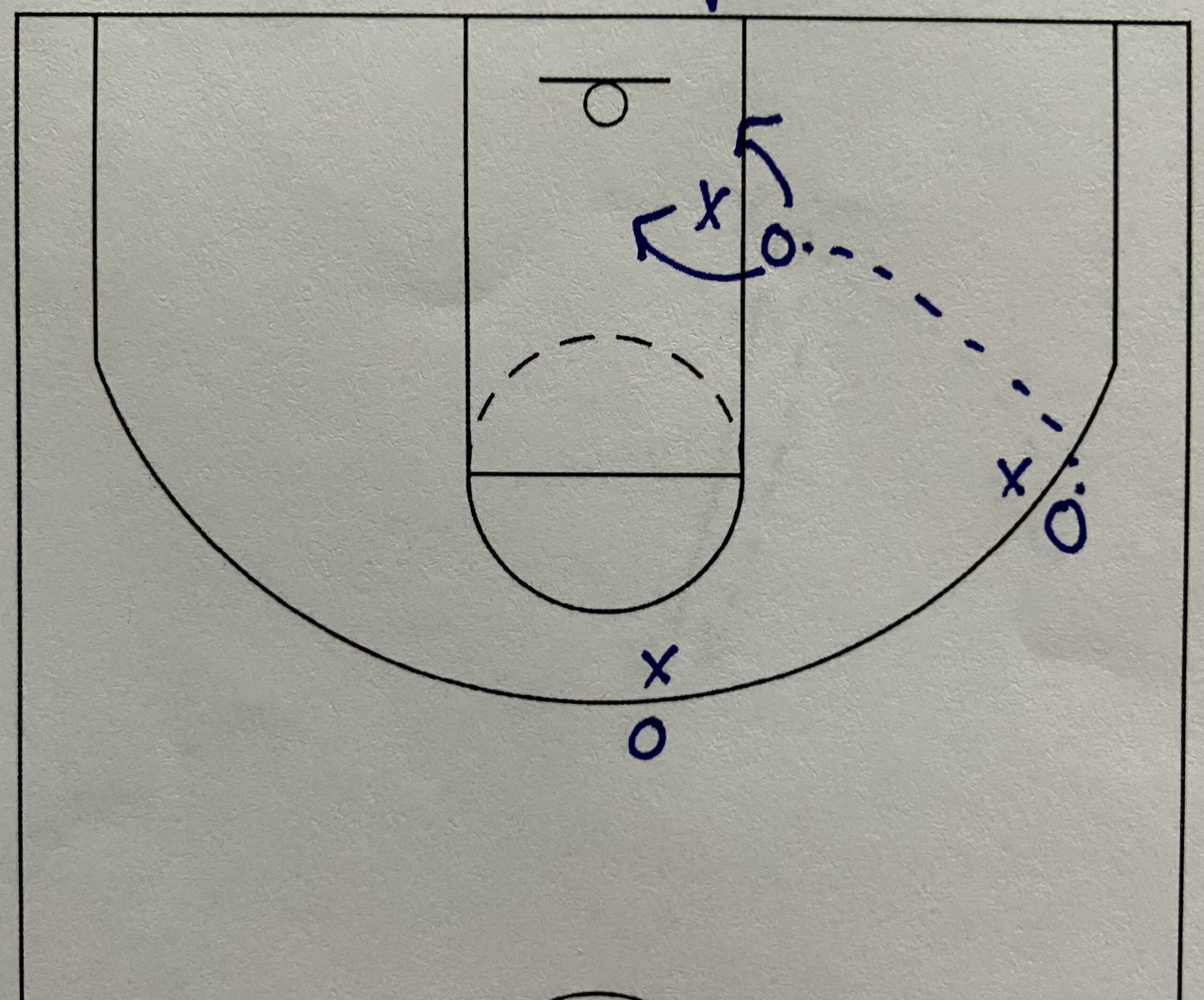
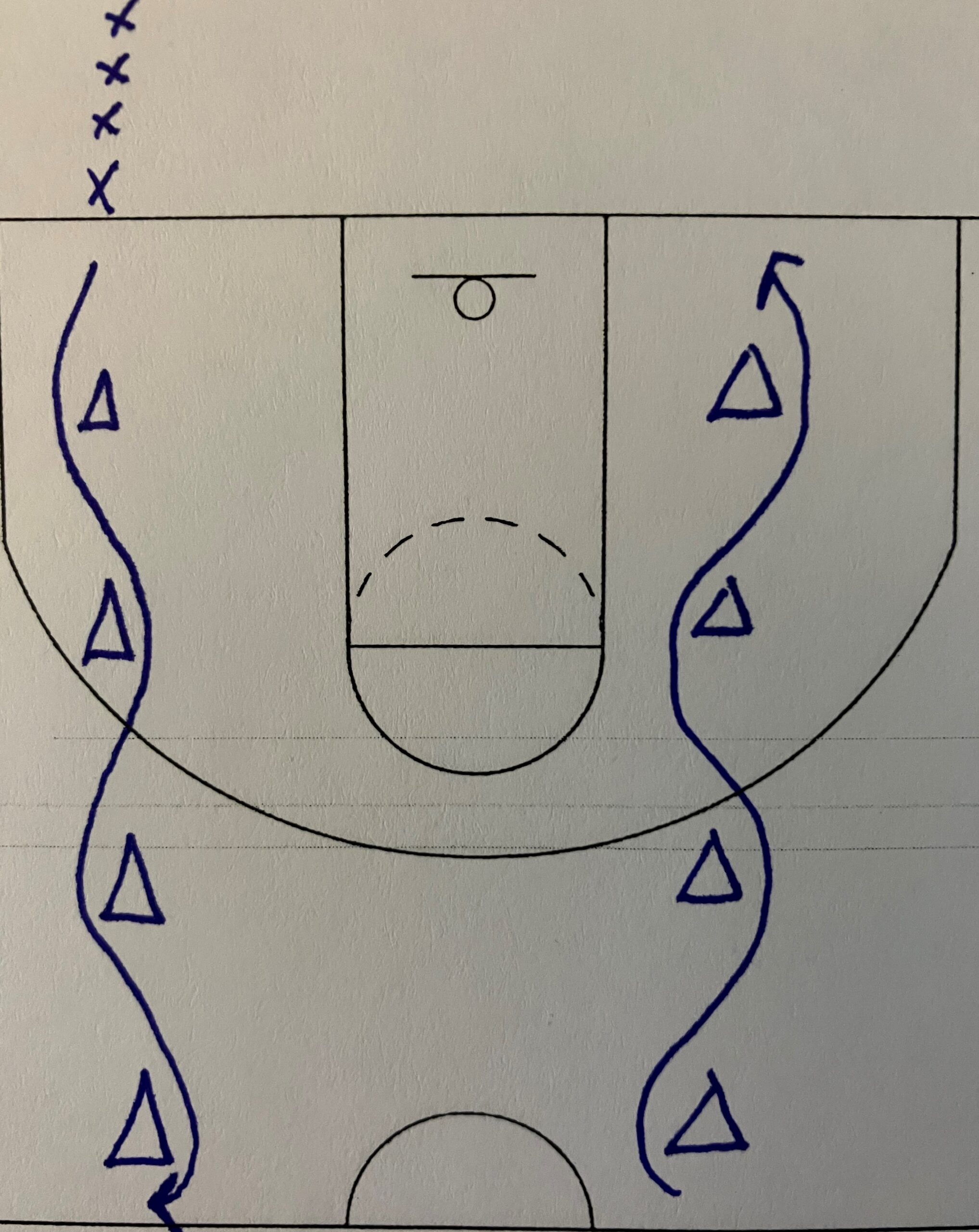


12 thoughts on “Post Entry Cuts and Relocation”